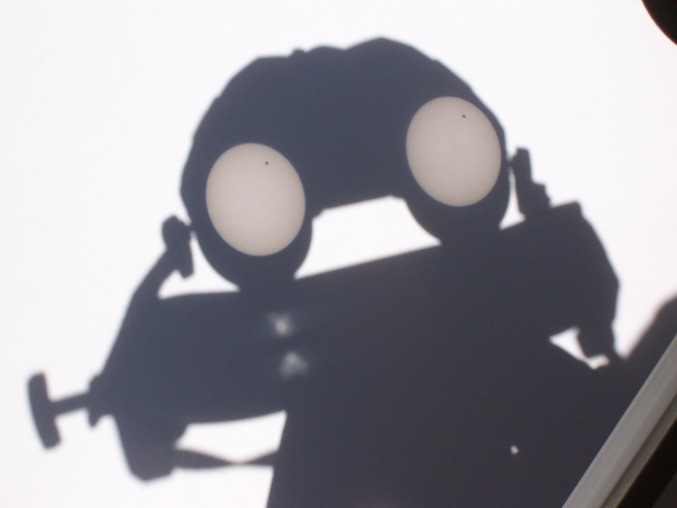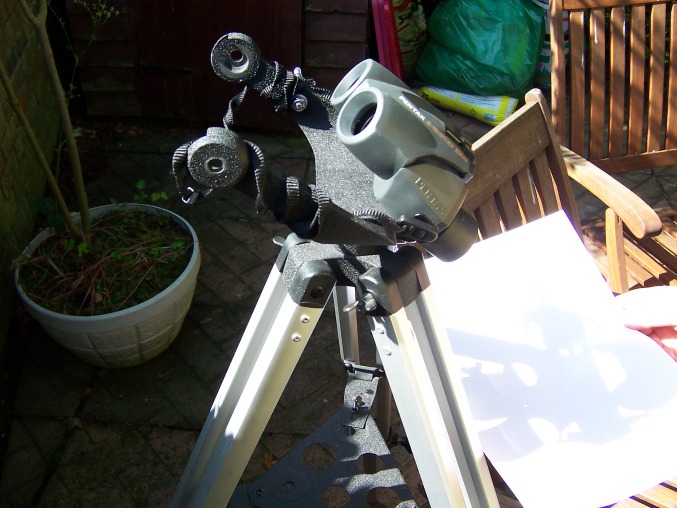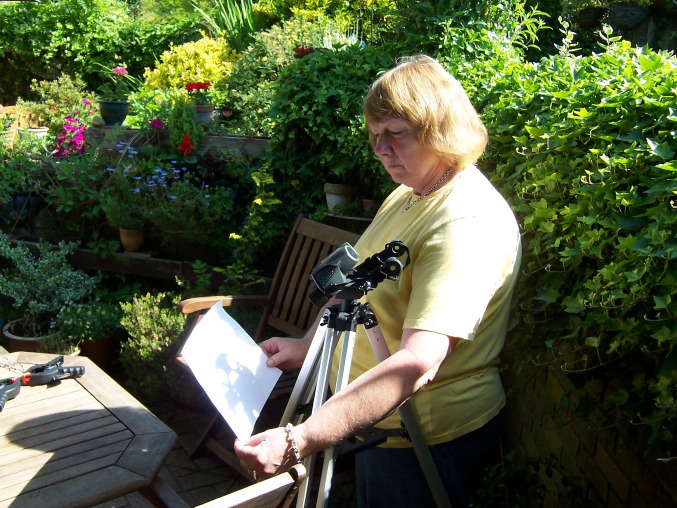Venus
During an initial period of remote test for an attached Canon EOS 650D to a Skywatcher 200 mm Newtonian telescope at the end of February 2014, I noticed one clear pre-sunrise morning that a crescent Moon and Venus appeared in close proximity. However, not close enough to be framed within the same field of view (FOV) provided by camera and telescope. Two unprocessed 'snaps' at different magnifications were taken, not knowing what the result might be. (Click on the thumbnails?).
The fact that the orbit of Venus around the Sun is within the orbit of the Earth (i.e. it's always closer to the Sun), it exhibits phases like our Moon. This also means that unlike the outer planets, Venus is always quite closely associated with the Sun, and sometimes can be observed as the 'morning star' (as in this example) rising just before sunrise, or as the 'evening star', to be seen following the Sun just after Sunset. At other times it is too close to the Sun to be observed, except of course during a very rare 'transit' (read on).
The Transit of Venus - where the planet Venus passes directly between us and the Sun, took place on 8th June 2004. Since this is a very rare event - the last one was in 1882, it is of great interest to astronomers. One reason is that it was once the only means to measure the distance of the Earth to the Sun, by timing how long it takes for Venus to transit from one edge of the Sun to the other. Knowing the speed of rotation of the Earth, this time is converted into a distance along one side of an enormous triangle. The angle between one edge of the Sun and the other can also be visually measured. So, we all know from school maths!, that having a side and an angle of a right angled triangle means we can find the other lengths, one of them being the distance to the Sun. This happens to be roughly 149, 600, 000 Km. QED!. There will be another one on June 6th 2012 (It turns out unfortunately, that it was cloudy here!!), but after that, the next will be in 121 years in 2117. So don't miss the one due in London Olympics year.
The pictures below show the result of observing the transit by projecting an image of the Sun onto white card through a pair of binoculars, and how this was done with the help of my able assistant! N.B. NEVER look at the sun directly through unprotected optical devices.
 |
| Projected Image of Transit |
 |
| Projection Kit |
 |
| Astronomical Technician
Margaret |


